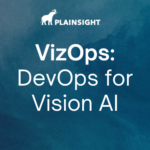Industry 4.0—also known as the Fourth Industrial Revolution—represents the widespread adoption of smart technologies in the manufacturing space with the goal of increased automation and accelerated innovation. It’s a concept that’s been maturing for some time, and ‘machine vision’ sits at the heart of it.
Whether leveraging cameras or simple sensors, machine vision technology enables industrial equipment to visualize scenarios and make decisions. While modern machine vision equipment deploys artificial intelligence (AI) to recognize things like flaws in production or even worker safety hazards, the concept actually predates modern AI as we know it.
Machine vision was really born on the assembly line, designed as a system of existing technologies and machinery that, combined, “watch” the production process and recognize when flaws occur. The earliest machine vision applications (deployed back in the 1970s) were based on simple and relatively specific algorithms that could recognize text and shapes.
Today, computer vision and deep learning have been applied to machine vision technologies that have accelerated their capabilities well beyond traditional process automation. While the benefits of early machine vision concepts were transformative on their own—removing human error and even enabling recognition beyond human capabilities, ie. X-ray detection—today’s applications are truly revolutionary.
Now, simple algorithm-based machine vision has evolved toward computer vision models that leverage neural networks to learn and enhance analysis of specific conditions and environments. Greater connectivity and the prevalence of edge devices have given rise to more visual data than ever to train and enhance these computer vision models. Robots can now see in three dimensions and even execute tasks based on computer vision analysis.
In a nutshell, computer vision has transformed the concept of machine vision as we know it to be a driver of process optimization—not just automation—and it’s pivotal to the success of Industry 4.0 as it continues to mature.
Where machine vision is making an impact
While hardly a new concept, machine vision solutions have shown huge adoption since the start of the pandemic as a means to protect workers. These systems enable businesses to remove humans from environments that may put them at risk—effectively preventing COVID-19 exposure in addition to the general hazards of the factory.
In these settings, humans can monitor vision systems and track results at a safe distance—if not fully remotely—while those machines and cameras on the factory floor conduct the actual image capture while computer vision models analyze visual data from throughout the factory.
The acceleration of vision technologies is reflected in market growth statistics. In 2021, orders for machine vision robots and technologies jumped more than 67 percent in Q1 compared to the same period a year earlier. Similarly, the North American machine vision market grew from 18 percent to $1.5 billion from January to June 2021. According to IDC, the total worldwide market for computer vision technologies was predicted to grow to $2.1 billion in 2021, from $760 million in 2020.
Due to customer privacy, the video above is for demonstration purposes only.
Examples of machine vision and computer vision in action
So where are all these new vision systems showing up? The short answer is: Almost everywhere.
One obvious arena is the automotive industry, where precision is key when manufacturing vehicles to meet ever-higher quality and safety standards to protect drivers on the road. One less obvious application is in helping ensure the production of altogether new technologies.
Chip manufacturing, for instance, is on the cusp of a major boom stateside as technology companies hope to become less reliant on foreign producers in the face of recent supply chain disruptions. Robots play a critical role in ensuring the quality of nascent chip manufacturing systems, helping ensure poor quality isn’t an additional strain on already-strapped chip supplies.
Similarly, with food recalls seemingly more prevalent than ever, ensuring the quality of labeling and packaging for high-demand products (ie. baby formula) can be better assured with machine vision and computer vision systems than the human eye alone.
While the potential applications for smart machine vision are vast and varied, enterprises don’t necessarily need complex machinery in place to execute on new vision AI initiatives.
Plainsight’s team of deep learning experts and its visual data science toolset enable enterprises to benefit from end-to-end strategy and services tailored specifically to meet business needs, complete with a CV production platform and flexible solution deployment options—including edge, public or private cloud, and on-premises. With unmatched success where others have failed in building and maintaining production solutions, Plainsight streamlines computer vision by offering a true partnership that helps our customers gain competitive advantages, seize opportunities with transformative innovation.
Contact us today to schedule time with Plainsight’s team to discuss your needs and the ways we can help you quickly realize the power and value of computer vision across your business.




